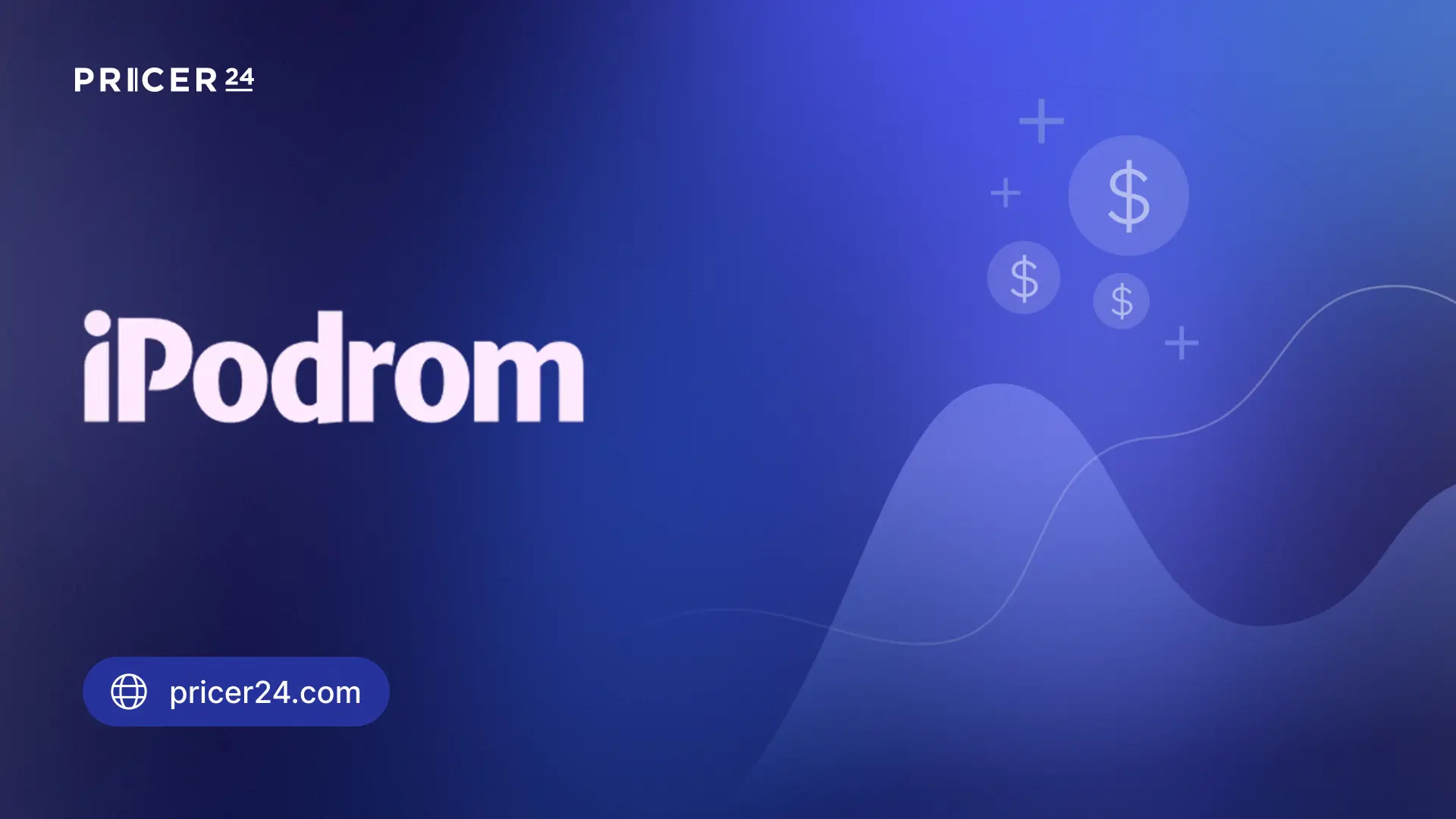Pricing intelligence has become a real game-changer in modern retail. In a time when price analysis software and dynamic pricing capabilities have made significant progress, leading e-commerce businesses are setting the trend for retailers worldwide.
It’s likely that your competitor is currently using price analysis software, making them more informed than you, faster and more precise in their pricing decisions, and ultimately more commercially successful. Ignoring the opportunities provided by modern pricing intelligence solutions can be a fatal mistake.
In this article, we take a detailed look at why modern retail can’t do without pricing intelligence tools, what the main stages of price analysis are, and how the results of price analysis help retailers make pricing decisions.
Contents:
What is Pricing Intelligence?
Why is Pricing Intelligence Important for Retailers?
Main Steps to Perform in Pricing Intelligence
Advantages of Pricing Intelligence
What To Do With Competitive Pricing Intelligence
What Is Pricing Intelligence?
Pricing intelligence is a business analytics methodology that relies on automated data collection and analysis solutions to help category managers make decisions regarding pricing policy adjustments. The process of price analysis consists of the following stages:
- Price crawling and product matching: scanning competitors’ websites, searching for information on product pages, and matching competitors’ products with your own SKUs
- Price parsing: automatically collecting data on product prices
- Price monitoring: analyzing competitors’ prices in real time
- Price comparison: comparing your prices with those of competitors for individual products, categories, brands, or segments
- Price change tracking: evaluating price fluctuations and analyzing a product’s price history over a specific period
The purpose of pricing intelligence for retailers is to optimize prices in an online store using basic pricing techniques, which should result in an increase in profits or turnover depending on the current business objectives and strategy.
Why Is Pricing Intelligence Important for Retailers?
Pricing intelligence provides retailers with accurate, real-time information about market prices. Continuous monitoring of competitor prices using modern software solutions like Pricer24 allows online stores to stay informed and promptly adjust their prices to meet market demands and respond to competitors’ actions.
Let’s consider a few reasons why pricing intelligence is crucial for retail businesses.
Retail prices change rapidly
If there’s one thing that changes in retail several times a day, it’s prices. Amazon re-evaluates and adjusts prices for each product every 10 minutes as needed, while Best Buy and Walmart change product prices over 50,000 times a month.
Prices are a dynamic and changeable indicator. Has a competitor changed the price of a top product, violating the Minimum Advertised Price (MAP) policy? Now their price is lower than yours purchase price, which will reduce your sales and and tie up your working capital. That’s why you should always keep your finger on the pulse and monitor market prices.
Gaining or strengthening a competitive advantage depends on prices
Pricing information is the foundation for building a competitive advantage. Properly understanding the market situation allows for swift adjustment of pricing policies to become a leader in a specific category or increase market share for a particular product.
Pricing intelligence helps you achieve specific business goals
Pricing intelligence and understanding competitors’ pricing strategies enable the development of pricing and marketing strategies aligned with business goals: protecting profit, maintaining competitiveness, increasing market share in a category, building or maintaining a desired reputation, and more.
Main Steps to Perform in Pricing Intelligence
Identify your main competitors
The first step in pricing intelligence is identifying competitors who sell similar products. Retailers must have a precise understanding of their direct competitors: They are the most critical competitors and pose the most significant threat, so they should be the primary focus. Any pricing intelligence strategy should begin with the formation of a competitor ranking.
Collect price data
Once you have a pool of competitors and a list of products to track, you can start collecting price data. You can collect it manually or use reports from price parsing software, but the most effective way is to use a modern platform for monitoring and analyzing competitors’ prices. For example, Pricer24 can collect and update competitor price data several times a day and present it in a convenient visual format for further analysis.
Analyze information
Data on retail pricing does not have much value on its own. It becomes valuable only after analysis. Pricing intelligence allows you to compare your prices with competitors’, understand trends, see weaknesses, and adjust your pricing strategy. After studying this information, you will understand why and how often competitors change their prices. In other words, you will be able to identify competitors’ pricing strategies.
Pricing intelligence is a complex and resource-intensive task, but it can be simplified through automation. Let’s look at the advantages it offers using the example of the Pricer24 market analytics system.
- Setting a task. The client provides the Pricer24 team with their product catalog and a list of sites to be monitored.
- Matching. The Pricer24 team matches and correlates the client’s SKUs with product listings on websites specified by the client.
- Data collection. Pricer24’s parser crawls competitors’ websites daily, collecting price data for products. In addition to prices, the platform gathers information about the availability of products on competitors’ digital shelves, product ratings, the number of reviews, promotions offered, and more.
- Data analysis. In addition to the parser, Pricer24 has functionality that makes it a pricing intelligence service, not just a tool for collecting data. This includes functionality for comparing products and prices, dashboards to keep all important indicators at your fingertips, and reports to aggregate and visualize data.
Let’s delve into the last point. In Pricer24, there are several fundamental types of price analysis reports:
- Price monitoring. A reporting system for real-time analysis of competitor prices.
- Price comparison. A reporting system for comparing your prices with competitors’ prices for individual products, categories, brands, and segments.
- Price tracking. A reporting system for evaluating price fluctuations and analyzing a product’s price history over a specific period.
Thanks to its reports and data aggregation, Pricer24 provides a comprehensive view of the market, allowing you to swiftly identify trends as well as the strengths and weaknesses in competitors’ pricing strategies.
Pricing intelligence provides insights, and in the hands of a knowledgeable category manager, these insights can be transformed into profit.
Advantages of Pricing Intelligence
Pricing intelligence is a revolutionary solution for e-commerce category managers. Here’s why:
- Time savings. Thanks to automated data collection, the time needed to make pricing decisions is reduced from days to hours. For example, MSI’s Ukrainian office saves at least 50 working hours per manager per month by using Pricer24’s price intelligence tools.
- Real-time statistics. Price data is collected multiple times a day. Therefore, you always receive up-to-date information and can quickly respond to price fluctuations in the market.
- Competitive benchmarking. Pricing intelligence not only allows you to track competitors’ prices but also to compare them with your own prices or the manufacturer’s MAP / MSRP. For example, Pricer24 offers a convenient reporting system for comparing your prices with competitors’ to determine who has prices that are lower, higher, or equivalent to yours both overall and for specific brands, categories, and products.
- Data visualization. Presenting data in a visually accessible manner enables you to see and understand trends and patterns. Furthermore, data visualization impacts the decision-making process, as sometimes a few charts and histograms make information more comprehensible to senior management and colleagues than bulky tables.
- Data transfer. Most pricing analytics services allow users to export prices to Excel or XML, and some also allow users to pull prices via APIs. For example, Pricer24 can be integrated with an online store’s website so that whenever the parsing data in Pricer24 is updated, it’s immediately transferred to the customer’s pricing system.
Category managers play a crucial role in the e-commerce business, and having a modern pricing intelligence tool in their arsenal enhances their data-based decision-making capabilities.
What to Do with Competitive Pricing Intelligence
Retailers operating in the e-commerce niche can use competitors’ price data for various purposes, such as:
1. Repricing goods. Manual repricing involves periodically reviewing your pricing strategy and making adjustments based on information gathered from competitor price analysis. Typically, it’s used in response to significant changes in competitor pricing and during special events such as holiday sales or promotional campaigns.
2. Monitoring MAP. Pricing intelligence allows online stores to detect instances of MAP violations by other retailers. For example, you can find out who first set a price lower than the manufacturer’s recommended price on a particular product or track specific dynamics to determine that MAP violations peak over the weekend. An online store can share this information with vendor partners, urging them to take measures to ensure fair competition.
3. Dynamic pricing. Dynamic pricing is a more advanced method of revaluing products that allows you to automatically adjust prices in real time. It is based on pricing intelligence data and predefined rules that determine when and under what conditions prices should be changed. For example, you might set rules such as 20% off the current price on weekends or 1% off the main competitor’s price.
Dynamic pricing is in demand among online stores that work with a large assortment in a highly competitive and rapidly developing market. Automation allows them to quickly change prices on the site with minimal involvement from managers, taking into account competitors’ prices, product availability and unavailability in competitors’ stores, exchange rate fluctuations, margin corridors, etc.
Pricer24 offers dynamic pricing capabilities, allowing you to set individual rules for specific categories or products and scale successful sales strategies to increase profits.
Summary
Pricing intelligence is as important for retailers as assortment management, sales planning, customer acquisition, and customer service. Prices are dynamic. This fact is difficult to influence. However, price changes can be tracked and analyzed in depth, and the right conclusions can be drawn. To ensure that the task of pricing intelligence does not get lost in the backlog and helps you improve KPIs, it is important to conduct regular pricing analysis and promptly adjust your pricing strategies.









